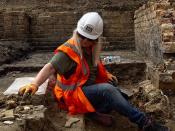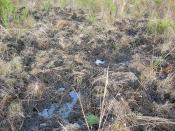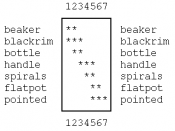Evaluating a site using dating techniques aids the archaeologist in finding a specific context or use for artifacts. Both relative and absolute dating techniques require the analysis of artifacts, whether they be stone, bone, pollen, or tools, etc. The difference between relative and absolute dating is that, absolute dating can find an exact date of how old a specific object is (say 1,000 years old approximately), where as relative dating is an estimation based on other factors of a given site. Relative dating is an archeological dating technique which assigns a speculative date to an artifact based upon many factors such as location, type, similarity, geology and association. Types of relative dating techniques include, dendrochrology, pollen analysis, ice core sampling, stratigraphy, seriation, linguistic dating, and climate chronology, in addition to many other types of dating. All of the dating techniques above are directly concerned with discovering the correct order of events at a site, and rely heavily on associations.
Ways in which archaeologists classify, record and conserve artifacts is mentioned previously in "Methods by which archaeologists carry out the uncovering or excavation of archaeological sites".


